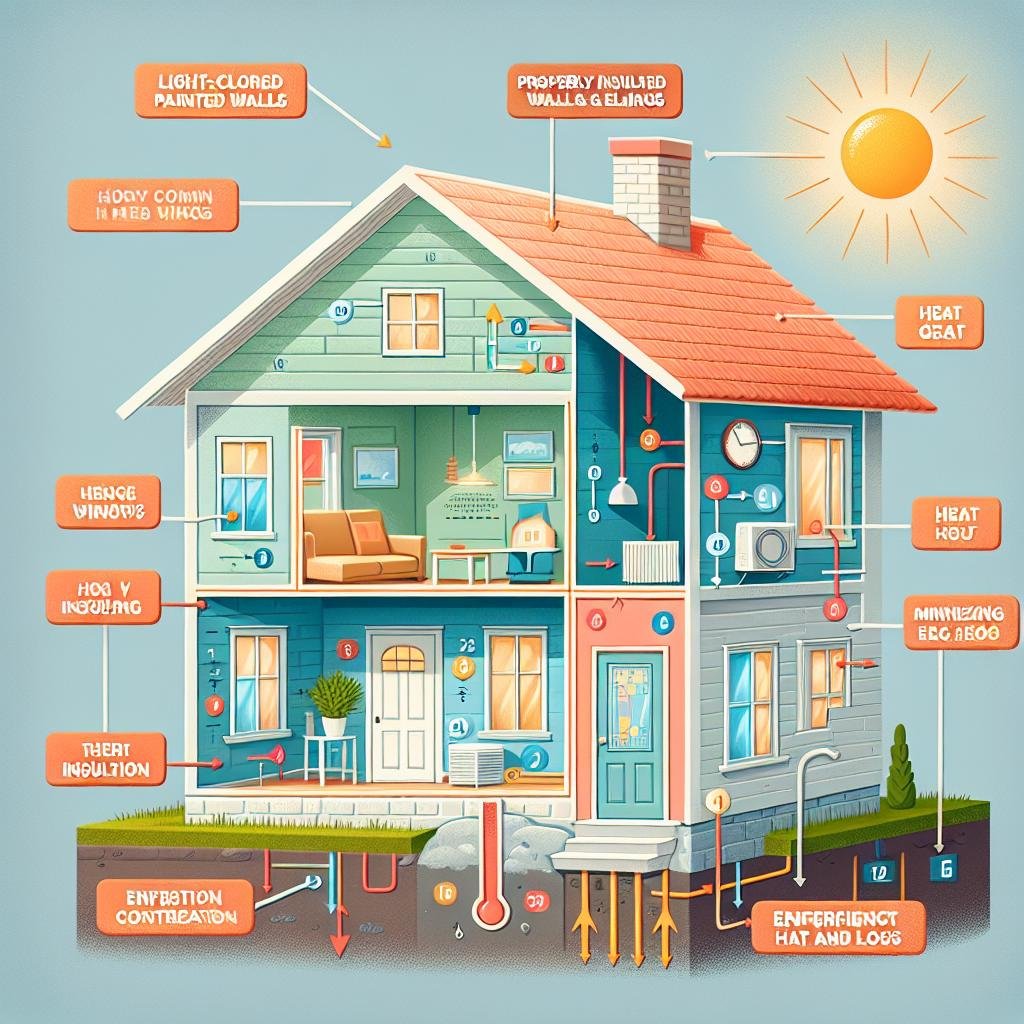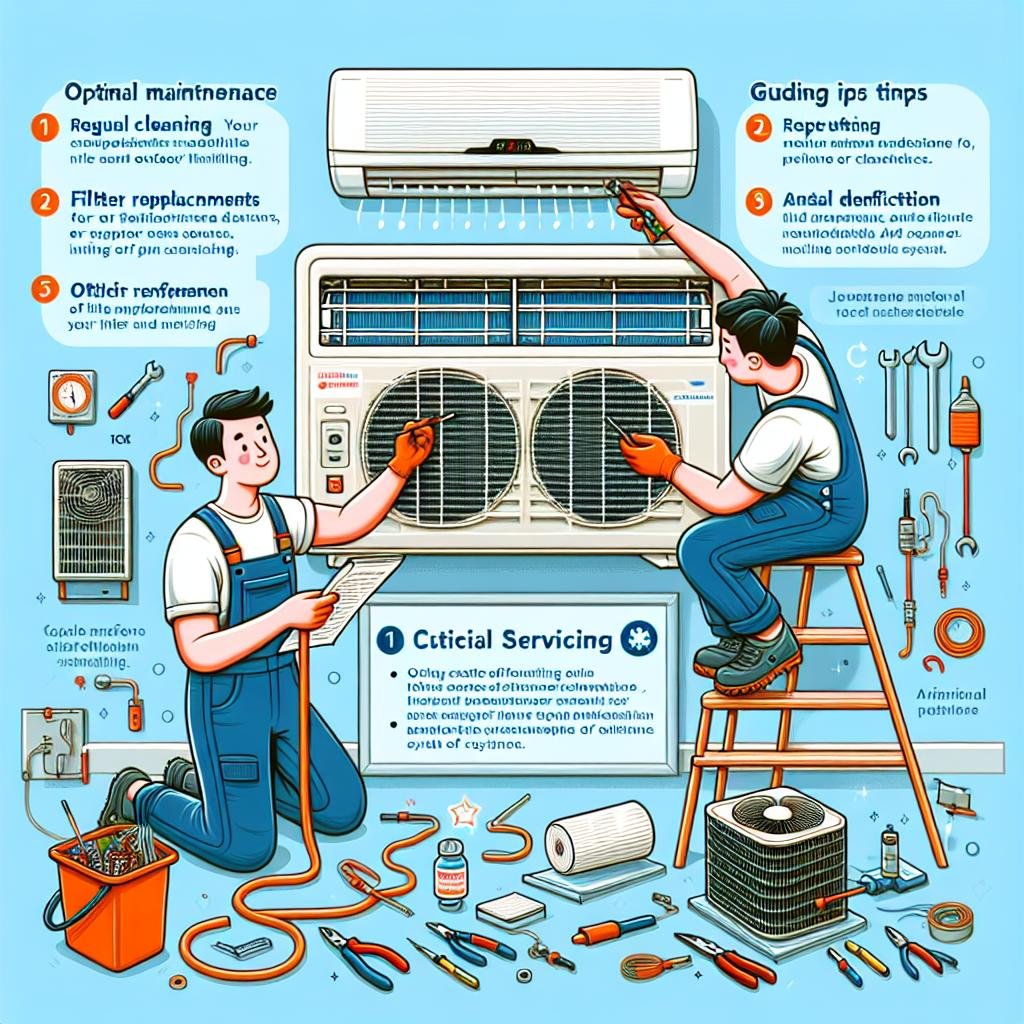Welcome to a world where staying cool and comfortable is as easy as flicking a switch! In this article, we will explore the fascinating role that insulation and efficient cooling with mini split AC systems play in creating an oasis of comfort in your home or workspace. So sit back, relax, and get ready to discover how these innovative systems can revolutionize the way you think about staying cool. Let’s dive in!
Understanding the Importance of Proper Insulation in Home Cooling
Imagine your home as a cozy sanctuary where every corner caresses you with comfort. **Insulation** plays a crucial role in making this a reality by acting as your home’s thermal guardian. Without proper insulation, the battle to maintain cool air inside is much like trying to fill a bucket with a hole in it. Effective insulation works by reducing heat transfer, which means that your cooling systems don’t have to work overtime, saving energy and lowering your bills. Whether it’s the attic, walls, or floors, insulation ensures that the temperature remains consistent, making your home more energy-efficient and environmentally friendly.
Pairing excellent insulation with a **Mini Split AC System** amplifies the effectiveness of your cooling strategy. These systems provide flexible and efficient cooling, enabling you to control temperatures in individual rooms. By optimizing both insulation and your Mini Split AC, you benefit from improved climate control and comfort. Here are some **key advantages**:
- **Zone Cooling**: Control temperatures room by room, cutting down on unnecessary energy use.
- **Energy Efficiency**: Lower energy consumption translates to reduced utility bills.
- **Flexible Installation**: No ductwork required, making it perfect for renovations or additions.
Choosing the Best Insulating Materials for Mini Split AC Systems
When it comes to maximizing the efficiency of your mini split AC system, picking the right insulating materials is crucial. **Insulation** not only ensures optimal temperature regulation but also helps in reducing energy consumption. Here are a few prominent options:
- Foam Board Insulation: Known for its impressive thermal resistance, foam board is a popular choice for home insulation.
- Fiberglass: This traditional material remains effective and is widely available, making it a go-to for many homeowners.
- Spray Foam: Perfect for sealing small gaps and cracks, spray foam is excellent for tighter spaces.
- Reflective Insulation: Ideal for hot climates, this material reflects radiant heat, keeping your interiors cooler.
**Choosing the right materials** depends on various factors including climate, budget, and specific home requirements. For example, in regions with sweltering summers, reflective insulation can be particularly effective, while spray foam might be ideal for older homes with nooks and crannies that need sealing. Here’s a quick comparison to help you decide:
| Material | Advantages | Disadvantages |
|---|---|---|
| Foam Board | High thermal resistance | Higher cost |
| Fiberglass | Cost-effective | Installation can be tricky |
| Spray Foam | Seals gaps efficiently | Requires professional installation |
| Reflective Insulation | Blocks radiant heat | Less effective in cold climates |

Maximizing Cooling Efficiency with Strategic Mini Split AC Placement
To unlock the full potential of your mini split AC system, it’s crucial to consider the **strategic placement** of the indoor units. Where these units are installed can greatly impact the efficiency of your cooling system. Placing units in areas with the highest heat gain—such as rooms with large windows or kitchens—can ensure that they tackle the warmest zones directly, preventing heat from spreading to other areas. Additionally, installing units in rooms you frequently use ensures they handle the main zones of comfort, reducing the need for excessive cooling throughout the house.
Another key point is to avoid placing mini split units where obstacles could obstruct airflow. Here are some places your mini split should ideally avoid:
- Directly behind furniture or heavy drapes
- In tight corners or narrow hallways
- Near other heat-generating appliances
For a quick reference, consider the following table highlighting prime mini split installation spots and their benefits:
| Location | Benefits |
|---|---|
| Large Living Rooms | Maximize comfort where you spend most time |
| Kitchens | Directly eliminates cooking heat |
| Bedrooms | Ensures a cool and restful sleep |

Expert Tips for Maintaining Peak Performance in Mini Split AC Systems
Ensuring your mini split AC system runs optimally isn’t just about regular servicing; it’s crucial to consider **insulation** and the efficiency of the cooling process. Proper insulation can make a dramatic difference in how effectively your air conditioner maintains the desired temperature, saving both energy and money. Here are some expert insights to help you optimize your home’s insulation:
- Seal Gaps: Make sure doors, windows, and any other openings are properly sealed to prevent cool air from escaping.
- Insulate Walls and Attics: Use high-quality insulation materials in walls and attics to significantly reduce heat exchange.
- Use Weatherstripping: Applying weatherstripping around windows and doors helps block unwanted drafts.
Beyond insulation, focusing on **efficient cooling** techniques can extend the life of your mini split system while improving comfort. For example:
- Regular Filter Cleaning: Clogged filters reduce air flow, making your system work harder. Clean or replace filters regularly.
- Optimal Thermostat Settings: Set your thermostat at a comfortable yet energy-saving temperature. Generally, 78°F is ideal when you are at home and higher when you are away.
- Zone Control: Take advantage of your mini split’s zoning capabilities to cool occupied rooms only.
| Task | Benefit |
|---|---|
| Seal Gaps | Prevents cool air leakage |
| Clean Filters | Improves air flow and efficiency |
| Optimal Thermostat Settings | Energy savings |
Implementing these tips will ensure your mini split AC system operates at peak performance, keeping you cool without breaking the bank.
Q&A
Q&A: The Role of Insulation and Efficient Cooling with Mini Split AC Systems
Q1: Hey there! So, what makes insulation such a big deal for cooling with mini split AC systems?
A1: Great question! Think of insulation as a cozy blanket for your home. It helps keep the cool air inside during summer and the warmth inside during winter. When you pair good insulation with a mini split AC system, you create a super-efficient environment. The AC doesn’t have to work as hard, so you get the perfect chill without skyrocketing energy bills.
Q2: That sounds awesome! But how do mini split AC systems stand out in terms of efficiency?
A2: Mini split AC systems are like the superhero of cooling! They’re designed to cool specific areas, or “zones,” rather than an entire house. This means you can target the exact rooms that need cooling. They’re also incredibly energy-efficient because they avoid the energy losses that come with ductwork in traditional central AC systems. Plus, a lot of these systems come with inverter technology, which adjusts the compressor speed to maintain the desired temperature without constantly turning on and off.
Q3: Can you break down how insulation works together with a mini split system to save energy?
A3: Absolutely! Imagine your home is a cup of iced lemonade. Insulation is the thermos that keeps the lemonade cold. When your home is well-insulated, the cool air from the mini split AC stays inside longer. This reduces the need for the AC to cycle as frequently, cutting down on energy consumption. So, while the mini split cools efficiently, the insulation ensures that the coolness sticks around, making your system even more cost-effective and environmentally friendly.
Q4: That’s really interesting! Are there specific types of insulation that work best with mini split systems?
A4: You bet! While any good insulation will help, some types are particularly effective. Spray foam insulation creates an airtight seal and is excellent for reducing drafts and thermal bridging issues. Rigid foam boards are another great option; they offer high R-values, meaning they’re very resistant to heat flow. Similarly, fibrous insulations like fiberglass or cellulose can be very effective, especially in the attic and walls. The key is to choose insulation that works best for your particular home and climate.
Q5: What about installation—do I need a pro to set up mini split systems and insulation?
A5: Yes, it’s best to call in the pros for both! Mini split systems are quite sophisticated and require precise installation to ensure optimal performance and efficiency. A professional installer can size the system correctly and place the indoor and outdoor units in the most effective locations. Similarly, professional insulation installers can make sure every nook and cranny is covered, avoiding any gaps that could compromise efficiency. Investing in professional installation up front can save you money and headaches down the road.
Q6: Lastly, are there any other benefits of combining good insulation with mini split AC systems?
A6: Absolutely! Beyond energy savings, you’ll enjoy a much more comfortable living environment. Goodbye to those annoying hot spots in summer and chilly corners in winter! Plus, well-insulated homes also tend to be quieter—insulation dampens outside noise. And let’s not forget the eco-friendly aspect; using less energy is kinder to our planet. So, you’re not just investing in comfort and savings, but also in a greener future. Win-win!
Q7: This all sounds fantastic! Any tips for getting started?
A7: First, assess your current insulation—many utility companies offer free or low-cost energy audits. Next, consult with a professional to determine the best mini split system for your needs. And don’t forget, it’s always smart to do a bit of research or get multiple quotes to ensure you’re getting the best deal and service. Happy cooling!
Q8: Thanks for all the info! Where can I read more about this?
A8: You’re welcome! For more in-depth details, tips, and resources, check out our full article online. We dive deeper into the types of insulation, step-by-step tips on professional installation, and how to maximize the efficiency of your mini split AC system. Stay cool!
Harnessing the power of both insulation and mini split AC systems could be your ticket to a more comfortable, energy-efficient home. Ready to take the plunge? Dive into the full article and start your journey to perfect home climate today!
The Conclusion
As we wrap up our deep dive into the world of insulation and efficient cooling with mini split AC systems, remember that comfort and energy savings can happily coexist. By harnessing the power of high-quality insulation and the precision of mini split technology, you’re not just cooling your space—you’re crafting an environment where every corner speaks the language of efficiency and tranquility.
So, the next time you find yourself basking in the cool embrace of your perfectly climate-controlled haven, give a nod to those insulation layers and whisper a thanks to your mini split system. Here’s to a cooler, cozier, and more sustainable future!
Until next time, stay cool and stay curious!

